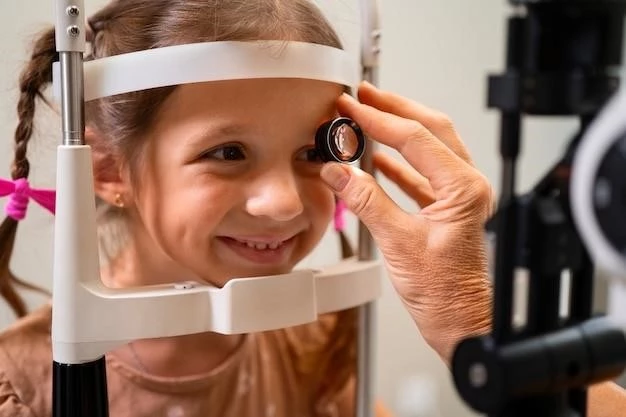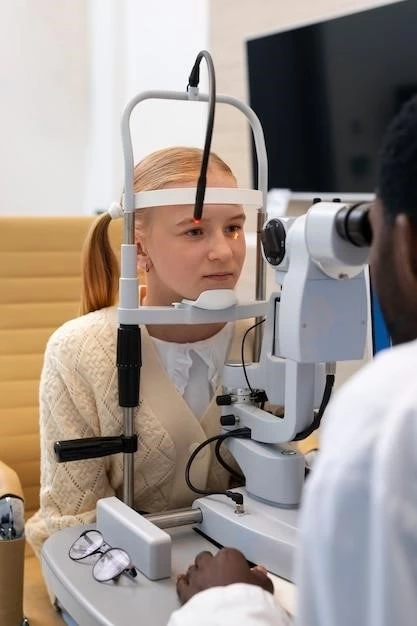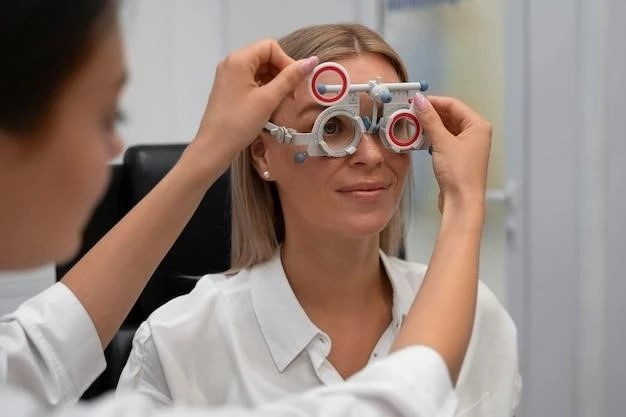Introduction to X-linked Retinoschisis
X-linked Retinoschisis (XLRS) is a genetic condition affecting boys and men. It is typically diagnosed in childhood, in some cases as early as three months of age. Learn more about the symptoms, causes, and treatment options.
X-linked Retinoschisis (XLRS) is a genetic condition that primarily affects males, leading to early vision impairment and retinal abnormalities. It is caused by mutations in the RS1 gene, resulting in structural changes within the retina, impacting visual acuity and potentially leading to complications like retinal detachment. Understanding the genetic inheritance pattern is crucial for diagnosis and management.
Definition and Overview
X-linked Retinoschisis (XLRS) is a genetic condition primarily affecting males, leading to vision impairment and retinal abnormalities.
Visual Impairment
X-linked Retinoschisis results in a decline in central vision, night blindness, crossed eyes, and abnormal eye movements, impacting both near and peripheral vision. Understanding these symptoms is crucial for early detection and management of the condition.
Crossed Eyes and Abnormal Eye Movements
Crossed eyes (strabismus) and abnormal eye movements (nystagmus) are common symptoms of X-linked Retinoschisis. Monitoring these ocular changes is essential for early intervention and management of the condition, helping to preserve visual function.
Night blindness is a common symptom of X-linked Retinoschisis, characterized by difficulty seeing in low light conditions. Understanding and recognizing this symptom is crucial for early diagnosis and effective management of the condition.
Night Blindness
Night blindness is a common symptom of X-linked Retinoschisis, characterized by difficulty seeing in low light conditions. Recognizing this symptom is important for early diagnosis and management.
Genetic Mutation in the RS1 Gene
X-linked retinoschisis is primarily caused by mutations in the RS1 gene. These genetic alterations lead to structural changes in the retina, affecting vision and contributing to the development of the condition. Understanding the role of the RS1 gene is essential for diagnosing and managing X-linked retinoschisis effectively.

Diagnosis of X-linked Retinoschisis
X-linked Retinoschisis is typically diagnosed in males between the ages of 3 months and school age٫ presenting with symptoms like visual impairment. Clinical examinations are essential for accurate diagnosis and appropriate management strategies.
Age of Diagnosis
X-linked Retinoschisis is typically diagnosed in males between the ages of 3 months and school age٫ with symptoms such as visual impairment usually becoming noticeable during early childhood. Early detection through clinical examinations is vital for effective diagnosis and intervention.
Clinical examinations are crucial for diagnosing X-linked Retinoschisis. These evaluations involve assessing visual acuity, examining the retina for abnormalities, and performing tests like electroretinogram (ERG) to determine the extent of retinal damage. Regular eye check-ups play a significant role in monitoring the progression of the condition and adjusting treatment plans accordingly.
Clinical Examinations
Clinical examinations play a crucial role in diagnosing X-linked Retinoschisis. These evaluations involve assessing visual acuity, examining the retina for abnormalities, and performing tests like electroretinogram (ERG). Regular eye check-ups are essential for monitoring the progression of the condition and adjusting treatment plans accordingly.
Management of Symptoms
The management of X-linked Retinoschisis focuses on addressing visual impairment, crossed eyes, abnormal eye movements, and night blindness. Treatment strategies may include corrective lenses, visual aids, and lifestyle modifications to improve quality of life. Regular follow-ups with eye care professionals are essential to monitor the condition and adjust management approaches as needed.
In cases of X-linked Retinoschisis where symptoms progress significantly, surgical interventions may be considered. Surgical options may include procedures to address complications like retinal detachment and vitreous hemorrhages. Consulting with a retina specialist for personalized recommendations is essential to determine the most appropriate surgical approach based on individual needs and symptom severity.
Surgical Interventions
In cases where symptoms progress significantly, surgical interventions may be considered to address complications like retinal detachment and vitreous hemorrhages. Consulting with a retina specialist for personalized recommendations is essential for determining the most suitable surgical approach based on individual needs and symptom severity.
Long-term Visual Impairment
Long-term visual impairment is a common consequence of X-linked Retinoschisis, potentially leading to progressive vision loss over time. Regular eye monitoring and adherence to treatment plans are essential for managing and adapting to changes in visual acuity effectively.
Ongoing genetic studies aim to further understand the mutations in the RS1 gene associated with X-linked Retinoschisis. These studies focus on identifying new genetic variants, improving diagnostic techniques, and exploring potential gene therapies to manage the condition.
Genetic Studies
Ongoing genetic studies aim to further understand the mutations in the RS1 gene associated with X-linked Retinoschisis. These studies focus on identifying new genetic variants, improving diagnostic techniques, and exploring potential gene therapies to manage the condition.
Researchers are exploring potential gene therapies as a promising approach for managing X-linked Retinoschisis. These therapies aim to address the underlying genetic cause of the condition and improve visual outcomes for individuals affected by XLRS. Stay informed about advancements in gene therapy for XLRS to explore potential treatment options in the future.
Potential Therapies
Researchers are exploring potential gene therapies as a promising approach for managing X-linked Retinoschisis. Stay informed about advancements in gene therapy for XLRS to explore potential treatment options in the future.
Individuals with X-linked Retinoschisis may face educational challenges due to visual impairment affecting their academic performance. Additionally, social interactions may be impacted by the condition. Seeking support from educators, vision specialists, and community resources can help navigate these challenges and optimize educational and social experiences despite the visual limitations.
Educational and Social Challenges
Individuals with X-linked Retinoschisis may face educational challenges due to visual impairment affecting academic performance. Seek support from educators, specialists, and resources.
Family planning considerations are important for individuals with X-linked Retinoschisis due to its genetic nature. Genetic counseling can provide valuable information about the risk of passing the condition to future generations. Understanding the inheritance pattern and discussing options with a genetic counselor can help in making informed decisions about family planning and reproductive choices.
Family Planning Considerations
When planning a family, individuals with X-linked Retinoschisis should consider genetic counseling to understand the risk of passing the condition to future generations. Making informed decisions about family planning based on the genetic inheritance pattern is crucial.
Support networks play a crucial role in helping individuals and families cope with the challenges posed by X-linked Retinoschisis. Connecting with support groups, vision rehabilitation services, and mental health professionals can provide emotional support, valuable resources, and guidance for navigating the impact of the condition on daily life.
Support Networks
Support networks play a crucial role in helping individuals and families cope with the challenges posed by X-linked Retinoschisis. Connecting with support groups, vision rehabilitation services, and mental health professionals can provide emotional support, valuable resources, and guidance for navigating the impact of the condition on daily life.
Retinal Detachment
Retinal detachment is a potential complication associated with X-linked Retinoschisis, requiring prompt intervention to prevent permanent vision loss. Regular eye examinations are essential for detecting early signs of retinal detachment and ensuring timely management to preserve vision.
Vitreous hemorrhages can occur as a complication of X-linked Retinoschisis, necessitating timely evaluation and management to prevent vision impairment. Regular monitoring and prompt intervention are essential for addressing vitreous hemorrhages and preserving visual function in individuals with XLRS.
Vitreous Hemorrhages
Vitreous hemorrhages can occur as a complication of X-linked Retinoschisis, requiring timely evaluation and management to prevent vision impairment. Regular monitoring and prompt intervention are essential for addressing vitreous hemorrhages and preserving visual function in individuals with XLRS.
Pediatric Considerations
X-linked Retinoschisis typically manifests in the first decade of life, presenting vision issues in males. Early detection and management strategies are crucial. Regular eye exams are essential to monitor the progression of the condition.
For individuals with X-linked Retinoschisis, using visual aids like magnifiers and assistive technologies such as screen readers can enhance daily activities and facilitate independent living. Exploring available resources and technology options tailored to visual needs can significantly improve quality of life.
Visual Aids and Assistive Technologies
Visual aids and assistive technologies play a crucial role in enhancing the daily lives of individuals with X-linked Retinoschisis. These tools, such as magnifiers and screen readers, can help improve visual tasks and promote independence. Exploring available resources and technology tailored to visual needs can significantly enhance the quality of life for individuals affected by XLRS.
Understanding the genetic inheritance pattern of X-linked Retinoschisis is crucial. It follows an X-linked recessive inheritance, meaning the gene responsible for the condition is located on the X chromosome. Males with the mutated gene are typically affected, while females may be carriers. Genetic counseling can provide important insights into the risk of inheritance and family planning considerations.
X-linked Recessive Inheritance
X-linked Retinoschisis follows an X-linked recessive inheritance pattern, impacting males more commonly than females due to the gene being located on the X chromosome. Understanding this inheritance pattern is essential for assessing the risk of the condition within families and guiding genetic counseling discussions.

Conclusion and Key Takeaways
X-linked Retinoschisis, a genetic condition predominantly affecting males, requires early diagnosis and management strategies to address visual impairment issues. Understanding the X-linked recessive inheritance pattern, utilizing visual aids, and seeking genetic counseling are crucial steps. Regular eye examinations, monitoring for complications like retinal detachment and vitreous hemorrhages, and engaging with support networks can help individuals navigate the challenges posed by XLRS and maintain their quality of life.
